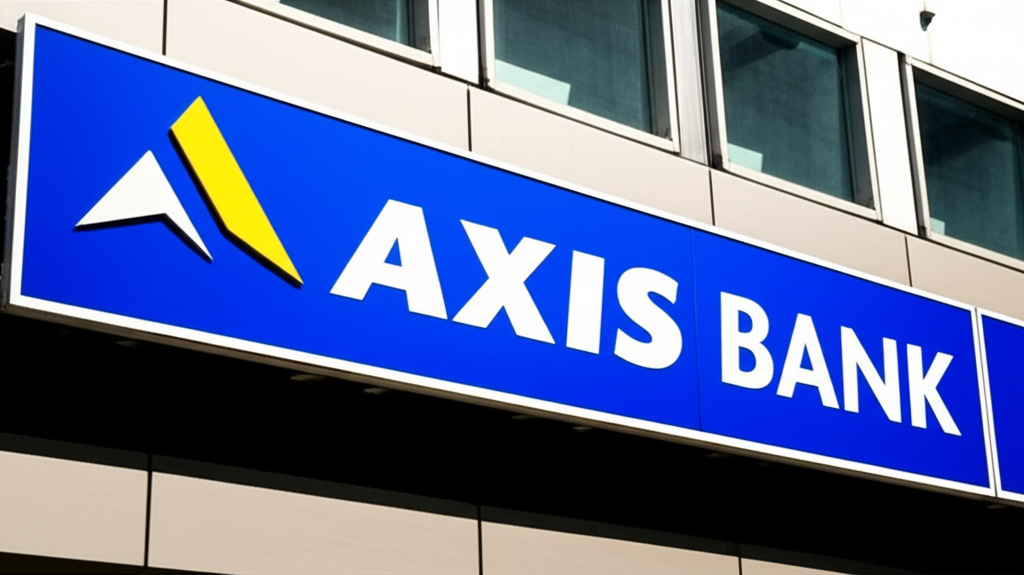On May 8, 2025, Coal India Limited shares surged by 2.9% to ₹394.8 on the Bombay Stock Exchange (BSE) and National Stock Exchange (NSE), following the announcement of its Q4 FY25 results. The state-owned coal mining giant reported a 12% year-on-year (YoY) increase in consolidated net profit, reaching ₹9,593 crore, compared to ₹8,530 crore in Q4 FY24. This performance, coupled with a recommended final dividend of ₹5.15 per share, has sparked renewed interest among investors. But with mixed analyst outlooks, fluctuating coal prices, and evolving energy market dynamics, the question remains: Should you buy, sell, or hold Coal India stock? This comprehensive analysis dives into the Q4 results, market sentiment, technical and fundamental factors, and long-term prospects to help you decide.
Coal India’s Q4 FY25 Performance: A Closer Look
Coal India, the world’s largest coal producer, posted stable yet mixed results for the quarter ending March 31, 2025. Here’s a breakdown of the key financial metrics:
- Net Profit: Consolidated net profit rose 12.04% YoY to ₹9,593 crore, up from ₹8,530 crore in Q4 FY24. This growth was driven by higher e-auction volumes and improved operational efficiencies, despite a marginal decline in revenue. Sequentially, profit increased by 11.55% from Q3 FY25’s ₹8,491 crore.
- Revenue: Revenue from operations grew marginally by 1.11% YoY to ₹37,824.54 crore, compared to ₹37,410 crore in Q4 FY24. However, it fell short of some analyst expectations, which pegged revenue at ₹38,152 crore.
- EBITDA: Earnings before interest, taxes, depreciation, and amortisation (EBITDA) increased by 12.9% YoY to ₹11,110 crore, with margins improving due to better pricing and cost discipline.
- Expenses: Total expenses rose slightly by 0.37% YoY to ₹29,057 crore, primarily due to higher employee costs, though strategic cost management kept the increase minimal.
- Dividend: The board recommended a final dividend of ₹5.15 per share (51.5% of face value), subject to approval at the Annual General Meeting (AGM). This adds to the interim dividends of ₹15.25 and ₹5.50 paid earlier in FY25, bringing the total dividend to ₹25.90 per share, yielding an attractive 6.92%.
Operationally, Coal India produced 781 million tonnes (MT) of coal in FY25, slightly below its 780 MT target, with an offtake of 201.6 MT in Q4 FY25, up 8% YoY. The company also ventured into new areas, including a coal-to-chemicals subsidiary, a 50mw solar plant, and critical minerals exploration, signalling diversification efforts.
Why Did the Stock Rise?
The 2.9% stock price rally can be attributed to several factors:
- Strong Profit Growth: The 12% YoY profit increase exceeded some analyst estimates (e.g., CNBC TV18’s ₹7,678 crore projection), boosting investor confidence.
- Dividend Appeal: The ₹5.15 final dividend, combined with a high dividend yield of 6.92%, makes Coal India attractive for income-focused investors.
- Operational Resilience: Despite global thermal coal prices hitting four-year lows, Coal India maintained profitability through higher e-auction premiums (₹2,650/tonne vs. ₹2,545/tonne YoY) and cost control.
- Market Sentiment: Posts on X highlighted the stock’s “cheap valuations” at a price-to-earnings (P/E) ratio of 6.7x, significantly below the sector average of 10.14x, fueling bullish sentiment.
However, the stock’s performance wasn’t without caveats. Revenue growth was modest, and production volumes dipped marginally by 2% YoY, raising concerns about demand softness in the thermal coal market.
Fundamental Analysis: Is Coal India a Good Investment?
To assess whether Coal India is a buy, sell, or hold, let’s evaluate its fundamentals.
Strengths
- Robust Financials: The company is virtually debt-free, with a strong return on equity (ROE) of 52.8% over three years and a healthy dividend payout ratio of 49.8%. Its market capitalisation stands at ₹236,525 crore as of May 7, 2025.
- Dividend Yield: At 6.92%, Coal India’s dividend yield is among the highest in the PSU sector, appealing to conservative investors.
- Valuation: Trading at a P/E of 6.7x and a price-to-book (P/B) ratio of 2.79, the stock appears undervalued compared to peers like Adani Enterprises (P/E: ~100x).
- Diversification: Initiatives like solar energy, coal-to-chemicals, and critical minerals exploration reduce reliance on thermal coal, aligning with India’s energy transition goals.
Weaknesses
- Revenue Stagnation: Flat revenue growth in Q4 FY25 reflects weaker e-auction realisations and global coal price declines, which could persist if demand softens further.
- ESG Concerns: Coal’s environmental impact raises ESG (Environmental, Social, Governance) risks, potentially deterring institutional investors.
- Volume Challenges: Marginal declines in production and dispatch volumes signal operational constraints, possibly due to logistical bottlenecks or softening power demand.
- Policy Risks: Government policies, such as coal import restrictions or renewable energy mandates, could impact long-term demand.
Opportunities
- Power Demand Growth: India’s rising electricity demand, driven by industrialisation and urbanisation, supports coal’s role in the energy mix, with coal-based power plants accounting for ~70% of generation.
- E-Auction Premiums: Higher e-auction volumes (13% of total sales in Q3 FY25) and premiums could offset price volatility if sustained.
- Diversification Gains: Investments in solar, critical minerals, and coal-to-chemicals could open new revenue streams, enhancing long-term growth.
Threats
- Global Coal Price Volatility: Thermal coal prices at four-year lows could pressure realisations if the trend continues.
- Renewable Energy Shift: India’s push for renewable energy (targeting 500 GW by 2030) may reduce coal’s dominance over time.
- Geopolitical Risks: Recent India-Pakistan tensions (e.g., Operation Sindoor) could disrupt markets, though Coal India’s domestic focus mitigates direct exposure.
Technical Analysis: What’s the Chart Saying?
From a technical perspective, Coal India’s stock shows mixed signals:
- Price Movement: As of May 7, 2025, the stock closed at ₹383.80, up 1.44% from ₹378.35. The 2.9% rally post-Q4 results pushed it to ₹394.8 intraday on May 8.
- Support and Resistance: The stock is trading below its 200-day simple moving average (SMA), indicating potential bearish momentum. Key support lies at ₹356, with resistance at ₹421.
- Trend: X posts note that the stock’s weekly supertrend indicator is in “sell mode,” and it has failed to break the ₹400–410 resistance zone in recent attempts.
- 52-Week Range: The stock’s 52-week high is ₹543.55 (August 26, 2024), and the low is ₹349.25 (February 17, 2025), reflecting volatility.
- Relative Strength Index (RSI): At ~45 (based on historical data), the RSI suggests the stock is neither overbought nor oversold, leaving room for movement in either direction.
The technical outlook suggests caution. The stock’s inability to sustain above ₹400 and its position below the 200-day SMA could signal further downside if bearish momentum persists. However, a breakout above ₹421 could trigger a bullish rally toward ₹450–480, as projected by analysts like Motilal Oswal (target: ₹480).
Analyst Ratings and Price Targets
Analyst views on Coal India are predominantly positive but tempered by near-term challenges:
- Motilal Oswal: Maintains a “Buy” rating with a target price of ₹480, citing strong dividend yields and robust cash flows. Expects flat YoY profit growth but 2.4% revenue growth in Q4 FY25.
- Nomura: Retains a “Buy” rating, emphasising operational efficiency and e-auction premium growth.
- Jefferies: Holds a “Hold” rating, citing weak power demand and coal price pressures, but acknowledges attractive valuations at 6.4x FY25E P/E.
- JPMorgan: Recently cut its target price to ₹395 from ₹430, reflecting concerns over oversupply and competition.
- SMC Global Securities: Projects subdued Q4 profitability due to weaker realisations and higher employee costs, advising caution.
- Consensus: Of 23 analysts covering Coal India, 12 recommend “Strong Buy,” 4 suggest “Buy,” 6 advise “Hold,” and 1 recommends “Sell.” The median 12-month target price is ₹467.87, implying a ~22% upside from ₹383.30 (May 7, 2025).
The consensus leans bullish, driven by undervaluation and dividend appeal, but near-term headwinds like coal price volatility and ESG concerns warrant caution.
Market Sentiment on X
Posts on X reflect mixed sentiment:
- Bullish Views: Users like @HetalChheda5 praised Coal India’s “stable” Q4, highlighting its 12% profit growth, strong cash flows, and cheap P/E of 6.7x. @Stocki_zen emphasised the 11.55% Qoq profit jump and attractive dividend.
- Bearish Views: @Stockstudy8 noted technical weaknesses, with the stock trading below the 200-day SMA and a weekly supertrend in “sell mode.” @stockse_ flagged subdued profit expectations pre-results, which tempered enthusiasm.
- Neutral Views: @ETMarkets reported the 2.9% rally objectively, while @EconomicTimes posed the buy/sell/hold question without a clear stance, reflecting uncertainty.
X sentiment underscores the divide: value investors see opportunity in low valuations and dividends, while technical traders remain wary of bearish signals.
Should You Buy, Sell, or Hold?
Based on the analysis, here’s a tailored recommendation for different investor profiles:
Buy
- Who: Long-term value investors and income-focused investors.
- Why: Coal India’s low P/E (6.7x), high dividend yield (6.92%), and strong fundamentals (debt-free, 52.8% ROE) make it a compelling value play. Its diversification into solar and critical minerals aligns with India’s energy transition, offering growth potential. The median analyst target of ₹467.87 suggests significant upside.
- Risks: Be prepared for short-term volatility due to coal price declines and ESG concerns. Monitor global coal demand and India’s renewable energy policies.
- Strategy: Accumulate on dips below ₹370, with a stop-loss at ₹350 to manage downside risk.
Sell
- Who: Short-term traders and ESG-conscious investors.
- Why: Technical indicators (below 200-day SMA, bearish supertrend) suggest near-term weakness. Global coal price declines and the shift to renewables could cap upside. ESG risks may deter institutional buying, limiting price appreciation.
- Risks: Selling now could mean missing out on dividend income and potential upside if the stock breaks above ₹421.
- Strategy: Exit if the stock falls below ₹356 (key support) or fails to sustain above ₹400, signalling a bearish trend.
Hold
- Who: Current shareholders with a medium-term horizon.
- Why: Coal India’s stable fundamentals and attractive dividends justify holding, but near-term challenges (flat volumes, coal price volatility) suggest limited catalysts for immediate gains. The stock’s range-bound movement (₹356–421) supports a wait-and-watch approach.
- Risks: Prolonged coal price weakness or adverse policy changes could pressure the stock. Conversely, a breakout above ₹421 could warrant adding to positions.
- Strategy: Hold with a trailing stop-loss at ₹350. Reinvest dividends to compound returns while awaiting clearer technical or fundamental signals.
Long-Term Outlook
Coal India’s long-term prospects hinge on India’s energy dynamics. Coal remains integral to the country’s power sector, with CEA projections estimating coal-based capacity at 260 GW by 2030. However, the government’s renewable energy push (500 GW target) and global decarbonization trends pose challenges. Coal India’s diversification into solar, coal-to-chemicals, and critical minerals is a strategic move to mitigate these risks, but execution will be key.
The company’s financial health—low debt, high ROE, and consistent dividends—provides a buffer against market volatility. Its undervaluation (P/E 6.7x vs. sector 10.14x) and analyst optimism (median target ₹467.87) suggest room for growth, provided it navigates coal price pressures and ESG concerns effectively.
Conclusion
Coal India’s 2.9% share price surge post-Q4 FY25 results reflects investor optimism about its 12% profit growth, attractive 6.92% dividend yield, and undervalued stock (P/E 6.7x). However, flat revenue, declining coal prices, and technical weaknesses (below 200-day SMA) warrant caution. Long-term investors should consider buying on dips for value and income, while short-term traders may opt to sell on technical breakdowns. Current shareholders should hold, leveraging dividends while monitoring for a breakout above ₹421 or a drop below ₹356.
Before investing, consult a certified financial advisor to align this analysis with your risk profile and goals. Stay updated via NSE India, BSE India, or Moneycontrol for real-time data.















0 Comments